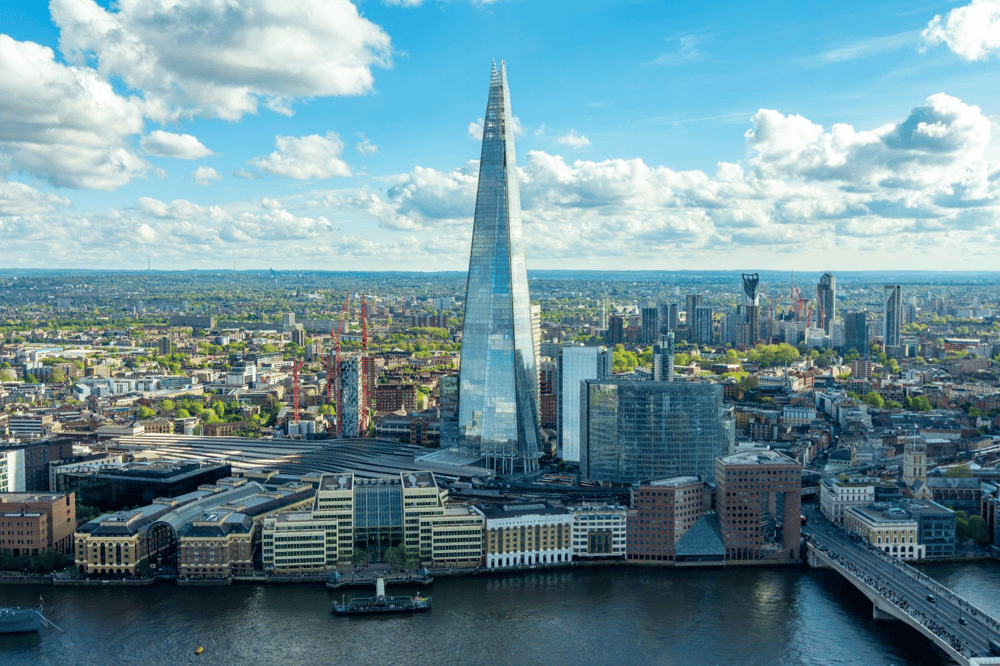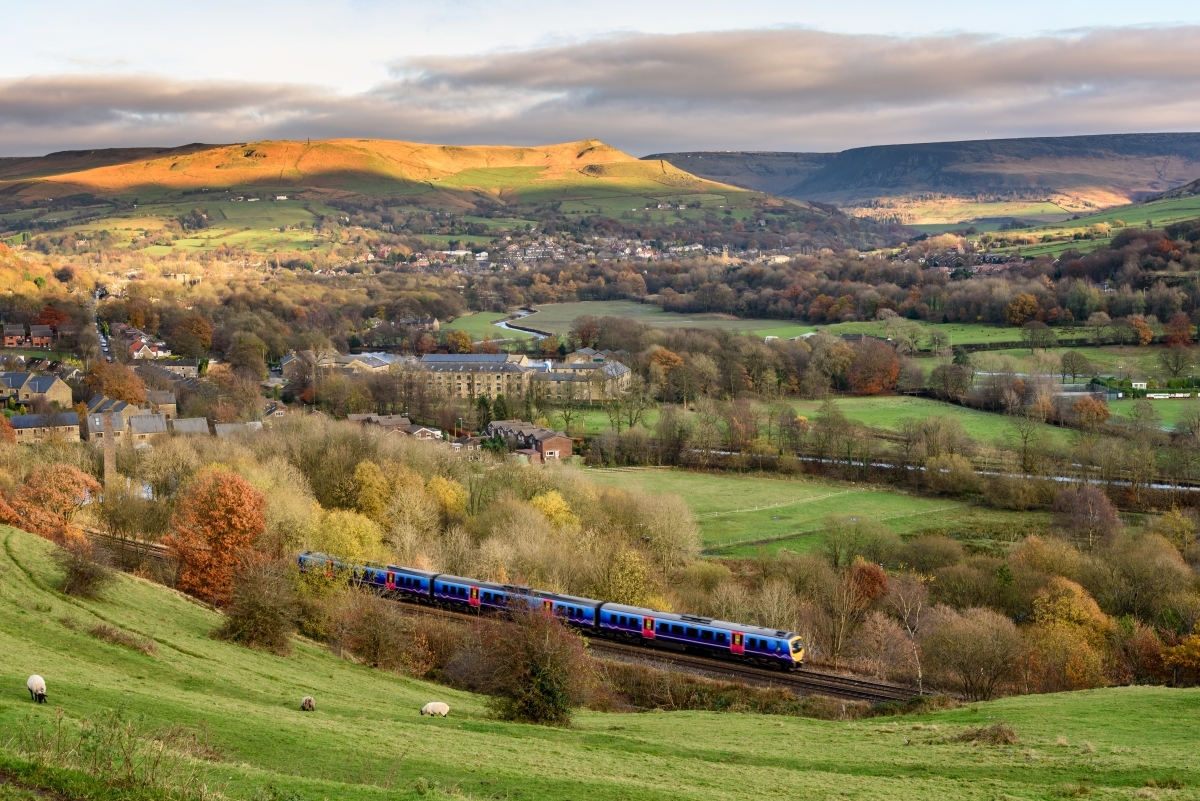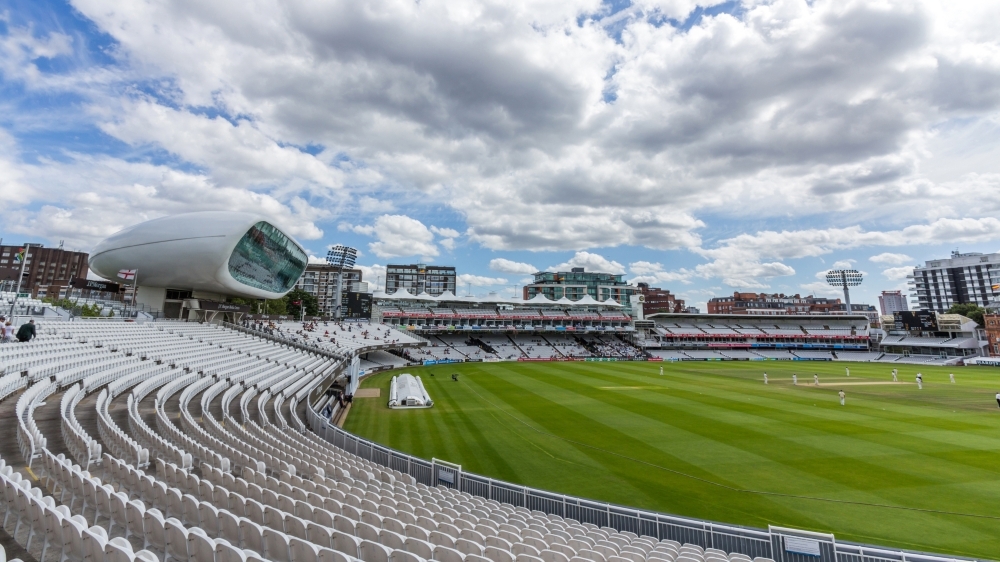Skyline of Steel – The London Skyscrapers That Define the City
What counts as a skyscraper? Globally, the Council on Tall Buildings and Urban Habitat defines a skyscraper as any building exceeding 150 metres in height. For London, a city which has historically been defined by much shorter buildings such as St.Pauls Cathedral, Big Ben and Tower Bridge, most of the modern skyscrapers have been built in the last 50 years, and now assert themselves as part of the skyline, reshaping not just the physical character of a neighbourhood but also, the way we perceive London today.
With a still growing number of skyscrapers now visible across the cityscape, primarily in the City of London, Canary Wharf and along key regeneration corridors such as Southwark and Nine Elms, some serve as commercial HQs for financial giants and tech firms, whilst others are luxury apartment complexes offering the pinnacle of modern living. The following selections don’t just meet the formal height definition for skyscrapers, but are the pick of the bunch for some of London’s most iconic and important new structures.

The Shard
The tallest building in the United Kingdom, The Shard stands as a towering icon of the London skyline of crystalline glass and steel. Rising 310 metres into the sky, it was designed by Italian architect Renzo Piano and completed in 2012. Its tapering silhouette and 11,000 individual glass panels were intended to evoke a shard of glass piercing the skyline, modelled as a visual counterpoint to the church steeples that once defined London’s verticality.
Acclaimed for its restaurants and the five-star Shangri-La hotel, it boasts some of the most exclusive residences in the city. At its summit sits The View from The Shard, a three-storey public viewing platform that offers the most unobstructed panorama in the city.
22 Bishopsgate
Rising from the ashes of the abandoned Pinnacle project, 22 Bishopsgate is the tallest building in the City of London’s Square Mile, standing at 278 metres above the ground. Completed in 2020, it was developed not as a trophy tower for a single corporation but as a vertical standing village. Home to over 12,000 workers with integrated wellness spaces, co-working areas, restaurants, and cultural venues spread across 62 floors, it's a space many call home.
Though lacking the visual drama of The Shard or the Cheesegrater, the building’s location on the former site of Crosby Court places it directly within the City’s high-rise cluster, where it holds court alongside icons like the Gherkin and Heron Tower. The sleek, rectilinear façade of glass and steel prioritises function over flamboyance. The building is also one of London’s most technologically advanced, boasting smart lifts, biometric access systems, and a private skywall that tracks weather conditions in real time.
One Canada Square
When One Canada Square opened in 1991, it was Britain’s first true skyscraper and for two decades, it was the country’s tallest building. Designed by the late César Pelli, the tower stands at 235 metres and became the visual and symbolic centrepiece of Canary Wharf. Clad in stainless steel and topped with a distinctive pyramid crown, it was inspired in part by New York’s Rockefeller Plaza and swiftly came to represent modern corporate power in the UK. The building offers over 1 million square feet of office space, housing firms such as Credit Suisse and HSBC over its 50 floors.
Though it no longer dominates the skyline in terms of height, One Canada Square remains a cultural and architectural landmark, with its pyramid roof still used as a navigation point for planes approaching Heathrow. Inside, it has adapted to changing work habits, now offering flexible office leases and upgraded amenities. For many Londoners, the building still symbolises the reshaping of East London into a global financial powerhouse, permanently transforming the former docklands into something wholly unrecognisable, yet unmistakably progressive.
The Leadenhall Building
Nicknamed “The Cheesegrater” for its distinctive sloping façade, the Leadenhall Building rises to 225 metres and is one of the most recognisable structures in the City’s extravagant skyline. Designed by the late Sir Richard Rogers and completed in 2014, the tower’s tapering form was engineered specifically to respect sightlines to St Paul’s Cathedral, a restriction that dictated its characteristic profile.
Situated opposite the Lloyd’s Building (also a Rogers project), the Leadenhall Building’s lower floors host shops and public spaces, while the 48 storeys above are occupied by major law firms, insurers, and finance companies. The building is also engineered to sway gently in high winds, part of the sophisticated structural design required for such height within a seismic urban environment. Despite its nickname, the tower is a rightly respected piece of architectural engineering, both from a playful and pragmatic perspective in equal measure.
The Landmark Pinnacle
As the tallest residential building in the UK (The Shard is not entirely residential of course), The Landmark Pinnacle is a 233-metre tower standing just south of Canary Wharf. Completed in 2021 by Squire & Partners, it houses more than 750 luxury apartments across 75 floors, along with a suite of resident-only amenities that rivals most five-star hotels. These include rooftop terraces, private dining spaces, a gym, a golf simulator, a cinema, and even a sky garden on the 75th floor, the highest of its kind in London. The upper units command views that stretch from Greenwich and the Thames Barrier, all the way to Hampstead Heath and Heathrow Airport.
Built as part of the Isle of Dogs’ shift from commercial to residential-led development, The Landmark Pinnacle represents a new phase in high-rise living in London. Its proximity to both Canary Wharf and the Jubilee Line makes it ideal for commuters, while the building itself fosters a self-contained lifestyle more often associated with cities like Singapore or Dubai. It marks London’s evolving development of upscale high-rise living and will no doubt pave the way forward for even more developments in the future.
Salesforce Tower
Rising 230 metres above Bishopsgate, the building formerly known as “The Heron” and now officially branded as Salesforce Tower was, for a brief period, the tallest building in the City of London. Completed in 2011, its design by Kohn Pedersen Fox is sleek and modular, with stacked glazed volumes and a distinctive vertical fin. The building was conceived as a flexible, energy-efficient workplace for the digital era, offering triple-height entrance lobbies, LED lighting systems, and impressive external lift shafts that glide up the side of the building like glass capsules.
It was one of the first London towers to integrate a dedicated restaurant on the upper floors, the celebrated Duck & Waffle by Chef Heston Blumenthal, and SushiSamba, both now institutions in their own right. Positioned near Liverpool Street Station, the tower forms part of the emerging high-rise cluster that has come to define the eastern edge of the City. At night, its LED-lit fin pulses gently above the skyline, a subtle but persistent reminder of the area’s transformation from old-school banking into a hybrid space for fintech, startups, and global software firms.



